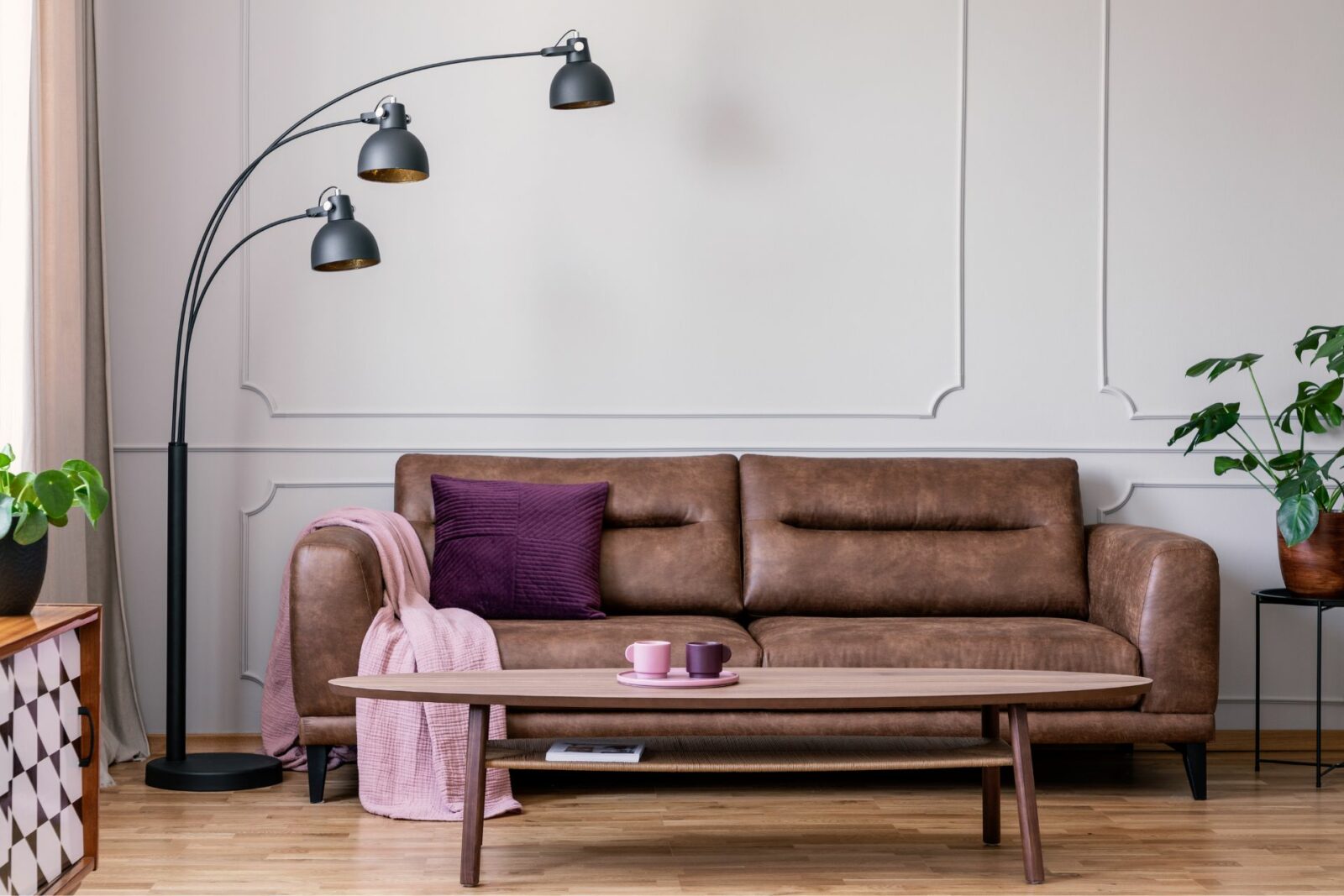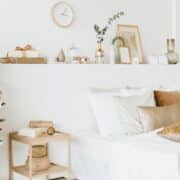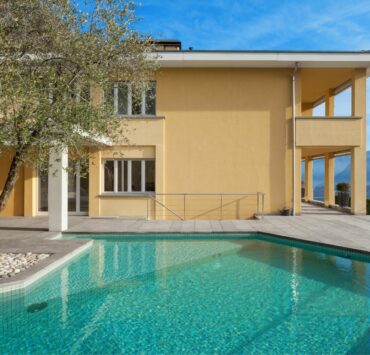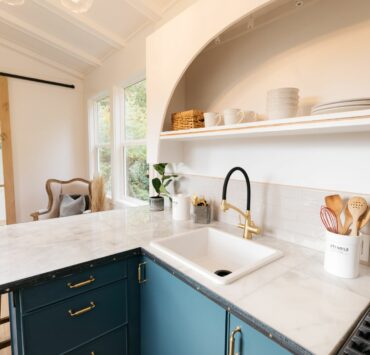Wainscoting is a classic architectural feature that adds elegance, texture, and visual interest to interior walls. With its timeless appeal, wainscoting can transform any room into a sophisticated and charming space. In this article, we will explore various wainscoting design ideas to inspire you and help you incorporate this beautiful feature into your home.
Wainscoting Design Ideas: Types and Styles
Wainscoting comes in various types and styles, allowing you to choose the perfect one for your home. Here are some popular wainscoting design ideas:
1. Beadboard Wainscoting
Beadboard wainscoting features narrow vertical panels with rounded “beads” that create a textured and traditional look. It is commonly used in cottage or farmhouse-style interiors, adding a touch of rustic charm. Beadboard wainscoting works well in entryways, hallways, or bathrooms.
2. Raised Panel Wainscoting
Raised panel wainscoting is a more formal and sophisticated style characterized by panels with raised edges and intricate detailing. It adds depth and architectural elegance to any room, particularly formal dining rooms, libraries, or offices. Raised panel wainscoting is often painted in a neutral or contrasting color to create a striking visual effect.
3. Flat Panel Wainscoting
Flat panel wainscoting, also known as shaker-style wainscoting, features flat panels with clean lines and minimalistic design. It offers a versatile and timeless look that complements various interior styles, from traditional to contemporary. Flat panel wainscoting is often painted in crisp white for a fresh and modern appearance.
4. Board and Batten Wainscoting
Board and batten wainscoting consists of wide vertical boards (boards) with narrow strips (battens) covering the joints. This style creates a more rustic and textured look, adding character to spaces like dining rooms, living rooms, or bedrooms. Board and batten wainscoting can be left in its natural wood finish or painted for a customized touch.
5. Picture Frame Wainscoting
Picture frame wainscoting, also known as frame-and-panel wainscoting, resembles a series of frames on the wall. It features vertical stiles and horizontal rails that enclose panels within the frames. Picture frame wainscoting is a versatile style that works well in formal dining rooms, hallways, or bedrooms, adding a touch of elegance and sophistication.
Wainscoting Design Ideas: Applications and Combinations
Wainscoting can be used in various ways to enhance the aesthetics of your home. Here are some creative wainscoting design ideas:
1. Half-Wall Wainscoting
Create a focal point in a room by applying wainscoting to the lower half of the wall, leaving the upper half painted or wallpapered. This technique adds visual interest and texture to the lower portion of the wall while maintaining a sense of openness and space.
2. Full-Wall Wainscoting
For a dramatic and luxurious look, consider installing wainscoting on the entire wall. This creates a cohesive and elegant backdrop for your room. Choose a style that complements the overall design and color scheme of the space.
3. Combination of Wainscoting and Wallpaper
Combine wainscoting with wallpaper above to create a strikingcontrast and visual interest. The wainscoting acts as a beautiful frame for the wallpaper, allowing it to become a focal point in the room. Choose a wallpaper pattern or design that complements the style and color of the wainscoting.
4. Two-Tone Wainscoting
Add depth and dimension to your walls by using two different paint colors for the wainscoting. Paint the lower portion of the wainscoting a darker color and the upper portion a lighter shade. This technique creates a visually appealing contrast and adds a touch of sophistication to your space.
5. Wainscoting as an Accent Wall
Instead of applying wainscoting to all walls, consider using it as an accent wall. Choose a prominent wall, such as the one behind the bed in a bedroom or the one behind the dining table in a dining room. The wainscoting adds texture and elegance, creating a focal point that enhances the overall design of the room.
Wainscoting Design Ideas: Frequently Asked Questions
FAQ 1: Can wainscoting be installed in any room?
Answer: Yes, wainscoting can be installed in any room, from entryways and living rooms to bedrooms and bathrooms. It adds character and elegance to both formal and casual spaces. Consider the style and design of the wainscoting that complements the overall aesthetic of the room.
FAQ 2: Is wainscoting suitable for small rooms?
Answer: Yes, wainscoting can work well in small rooms. It can visually expand the space by drawing the eye upward and adding vertical elements. Consider lighter colors and simpler designs for a more spacious feel. Additionally, using wainscoting on only a portion of the wall can create the illusion of height and openness.
FAQ 3: Can wainscoting be combined with other wall treatments?
Answer: Yes, wainscoting can be combined with other wall treatments for a customized look. Consider pairing wainscoting with wallpaper, paint, or even textured finishes to create a unique and personalized design. Be mindful of the overall color scheme and balance between the wainscoting and other wall treatments.
FAQ 4: How high should wainscoting be installed on the wall?
Answer: The height of wainscoting installation can vary depending on personal preference and the style of the wainscoting. As a general guideline, wainscoting is typically installed between 32 to 36 inches from the floor. However, it can be adjusted to fit the proportions of the room and desired visual impact.
FAQ 5: Can wainscoting be installed as a DIY project?
Answer: Yes, wainscoting can be installed as a DIY project with the right tools and materials. However, it requires precision and attention to detail. If you’re not confident in your carpentry skills, it’s recommended to hire a professional to ensure a seamless and professional installation.
FAQ 6: How do I maintain and clean wainscoting?
Answer: Wainscoting is relatively easy to maintain and clean. Regular dusting and wiping with a soft cloth or a mild soap solution can keep it looking fresh and beautiful. Avoid using abrasive cleaners or harsh chemicals that can damage the finish. Follow the manufacturer’s instructions for specific care guidelines.
Conclusion
Wainscoting adds a touch of elegance, texture, and charm to your walls, transforming any room into a sophisticated space. With various styles, applications, and combinations, you can customize the look to suit your personal style and enhance the aesthetics of your home. By incorporating these wainscoting design ideas, you’ll create walls that are not only visually stunning but also timeless and captivating.
Related posts:
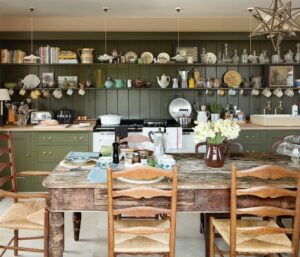 Aesthetic Vintage Farmhouse Kitchen Decorating Ideas For That Exudes A Rustic Vibe
Aesthetic Vintage Farmhouse Kitchen Decorating Ideas For That Exudes A Rustic Vibe
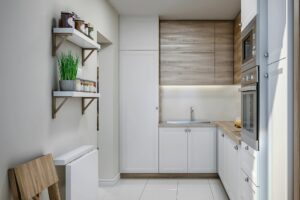 Clever Storage Solutions: Small Kitchen Cabinets and the Best Ideas
Clever Storage Solutions: Small Kitchen Cabinets and the Best Ideas
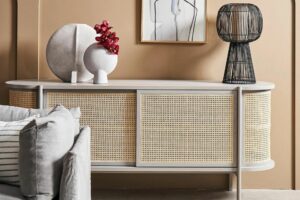 Cane Cabinets: An Interplay of Timelessness, Durability, and Versatility
Cane Cabinets: An Interplay of Timelessness, Durability, and Versatility
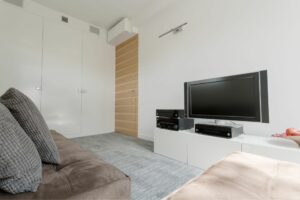 Immerse Yourself in Luxury: Home Theater Design Ideas for an Unforgettable Entertainment Experience
Immerse Yourself in Luxury: Home Theater Design Ideas for an Unforgettable Entertainment Experience
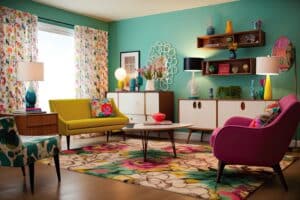 11 Maximalist Home Decor Ideas: A Dive into Vivacious and Eclectic Interiors
11 Maximalist Home Decor Ideas: A Dive into Vivacious and Eclectic Interiors
